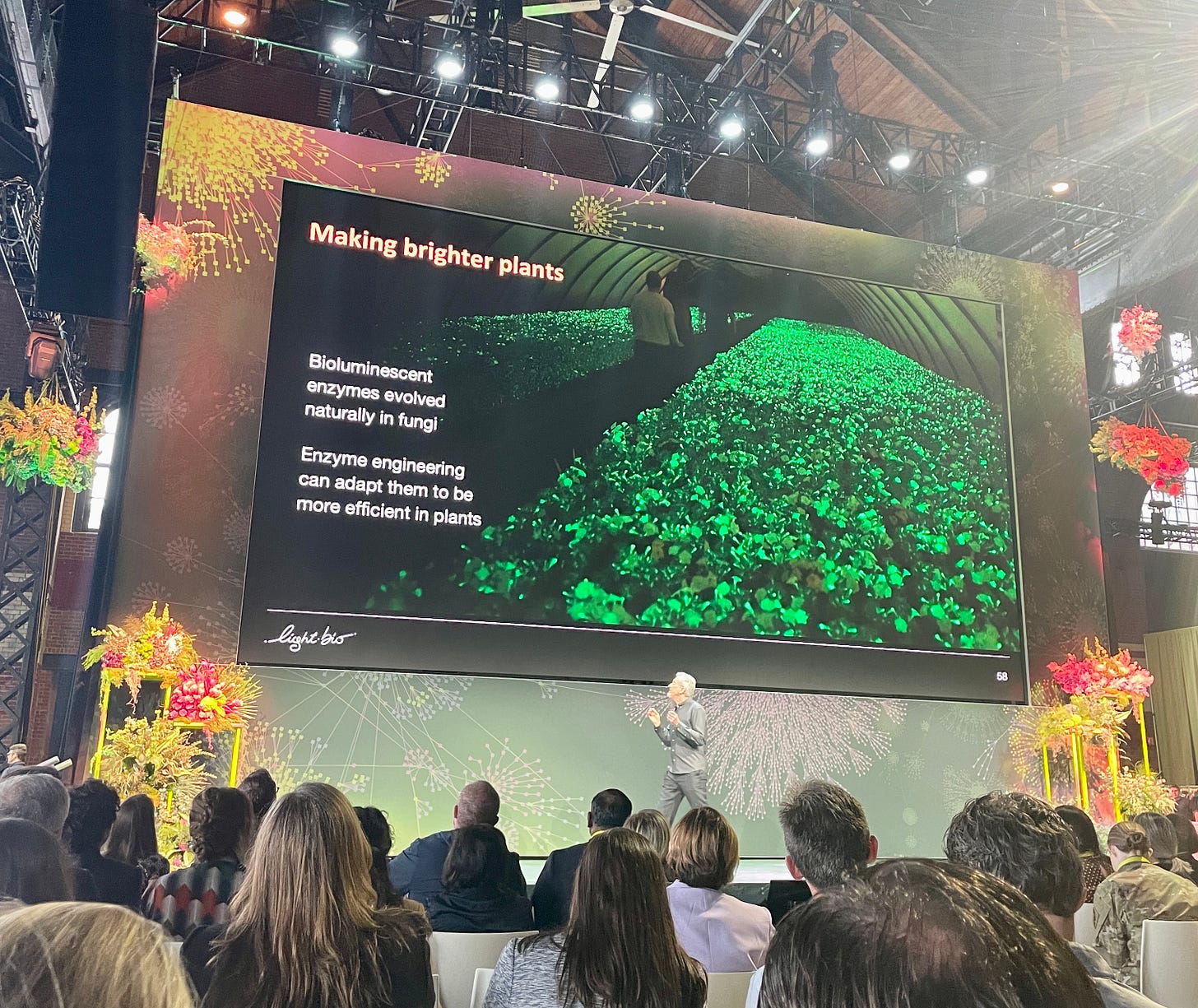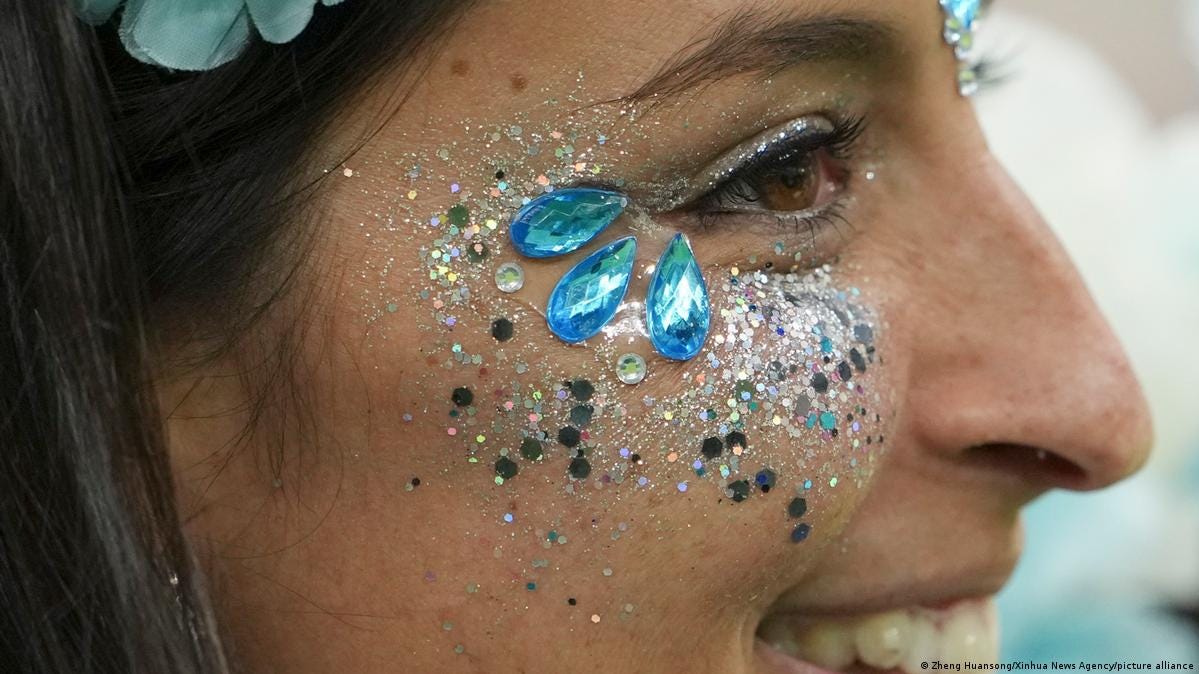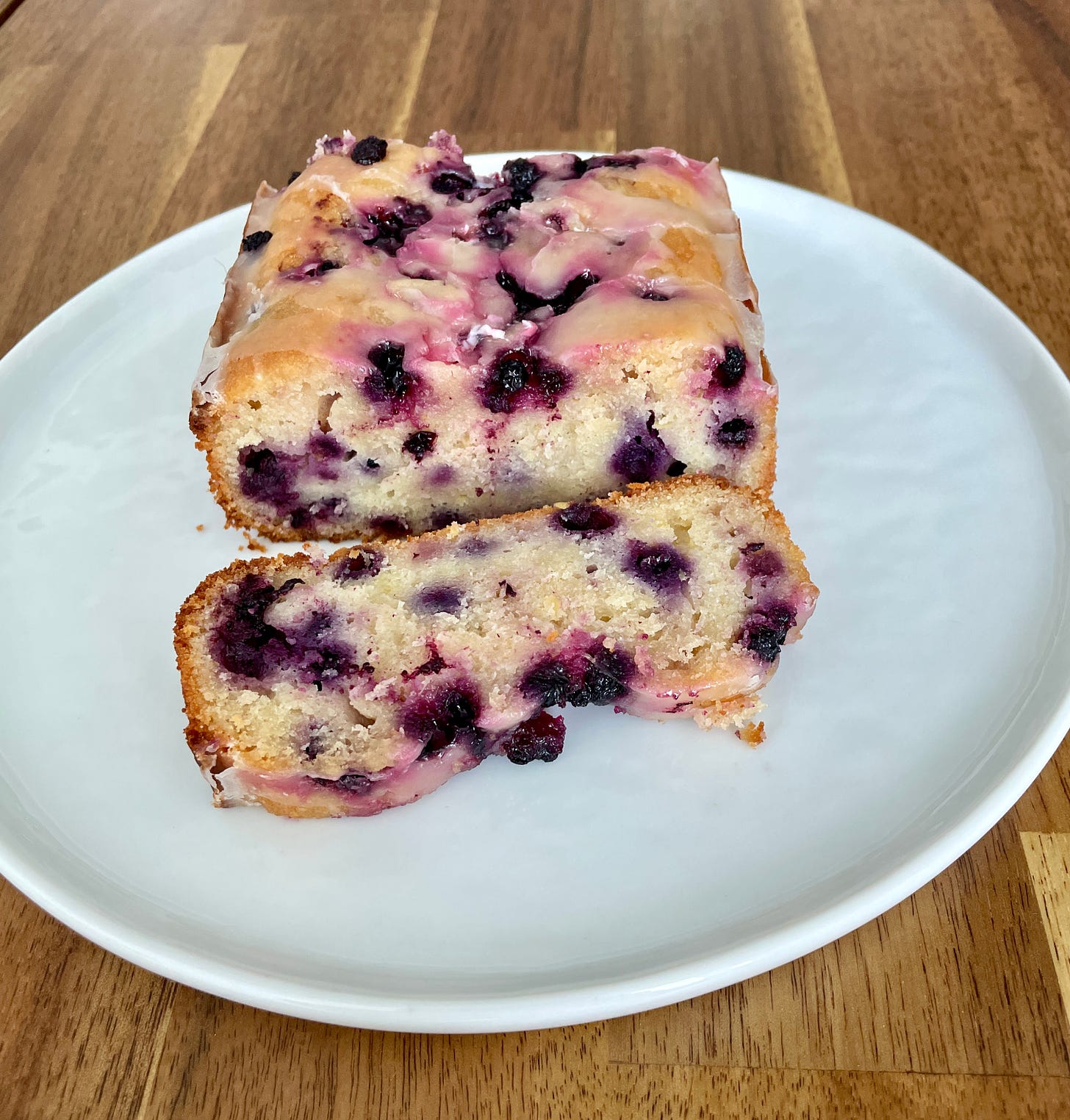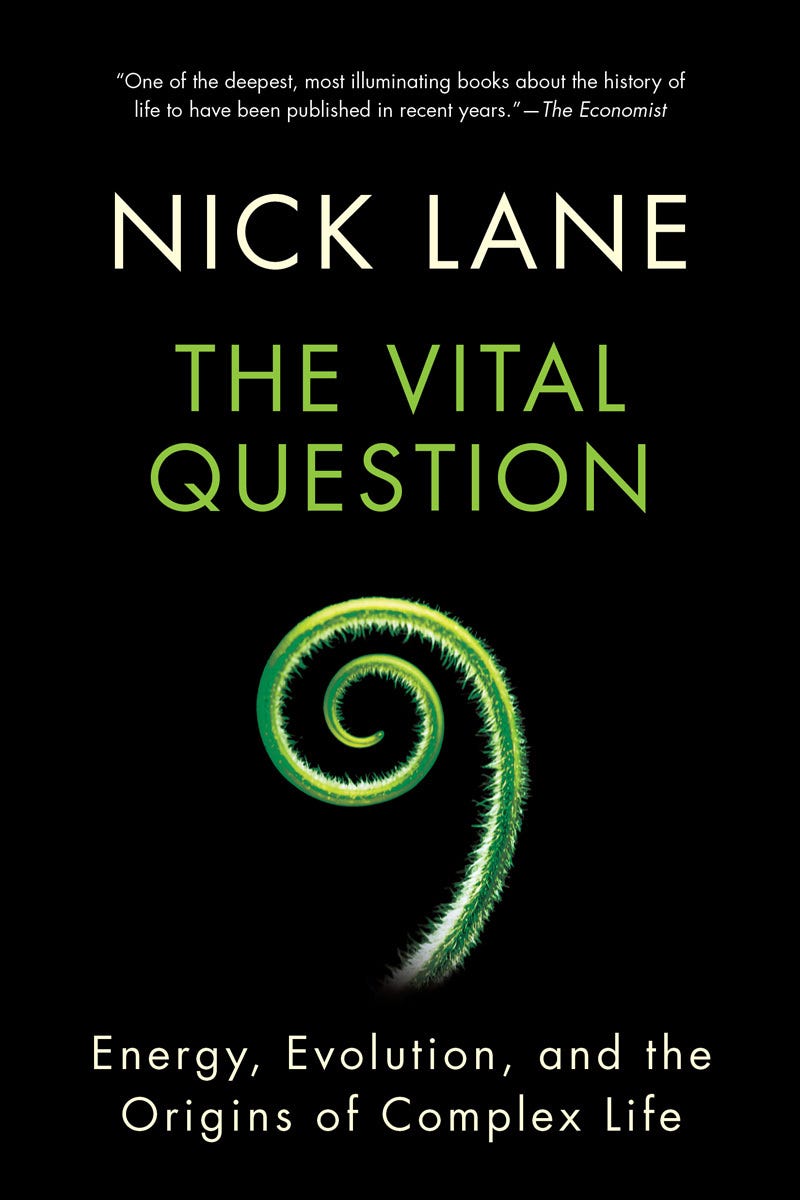5 Takeaways from Gingko Ferment, Almond Blueberry Cake & The Vital Question
The AI buzz reaches biology, a delicious Ottolenghi treat, and how the first microbes appeared on Earth (#64).
💥 5 Takeaways from Gingko Ferment
Gingko Bioworks is the poster child of synthetic biology, or SynBio for short. I attended their 5th annual conference in Boston last week called Gingko Ferment.
It was great to see familiar faces, meet new world-changers, and stay up-to-date with the latest in this space. Spoiler alert: lots of buzz around AI.
Here are 5 of my takeaways:
1. 🧼 SynBio is enabling more cool consumer-facing products
More cosmetic, personal care, and household products are about to get a boost from biology. Synthetic biology enabled the success of hair products like K18 Hair, and more success stories are on the way:
🌹 Future Society is developing a perfume made from the extinct flower Wendlandia augustifolia, disappearing in 1917 in India. DNA from specimens at the Harvard Herbarium were introduced in a microbe to reproduce its scents. Such a cool conversation starter!
🌺 Light Bio is making glow-in-the-dark petunias by using enzymes from bioluminescent mushrooms. These happen to be more compatible with plants’ chemical pathways than the ones in fireflies. Imagine what front yards might look like in the evenings.
2. 🤖 AI, AI, and AI
The AI boom with the success of OpenAI and Nvidia is sparking conversations on combining AI and biology.
“Where do I think the next amazing revolution is going to come? … There's no question that digital biology is going to be it.” - Jensen Huang, CEO of Nvidia
Since the Human Genome Project (HGS) completion in 2003, billions of genes have been sequenced. With so much sequence, functional, and meta data, machine learning will help us understand and program biology like never before.
Gingko Bioworks is making big bets on AI. During Ferment, they announced their Lab Data as a Service platform to accelerate R&D cycles, optimize enzyme design, and de-risk clinical development.
Gingko is acquiring companies with valuable training data, including most recently AgBiome last week. The company has rich microbial diversity data, with over 115K sequenced strains and 500M unique gene sequences.
There are definitely applications for machine learning in biology, and there is also a lot of hype. A few areas like protein folding, enzyme optimization, and strain engineering are already gaining traction with AI – the rest remains to be seen.
3. 📑 Build in markets with regulatory constraints
SynBio products have great potential in markets where current products are facing regulatory pressures. The EU recently banned microplastics from consumer products, in an attempt to cut microplastics by 30% by 2030.
BioWEG is developing alternatives to microplastics and non-degradable polymers with microbial cellulose. They can also be included at a lower rate than current ingredients.
The combination of better technology and regulatory pressures is promising for product success.
4. 🦠 Improving health through the microbiome
7 out of 10 Americans face issues with gastrointestinal (GI) health, and for 40% of Americans it impacts their daily lives.
Health is tied to our guts, which has 5 times as many neurons as our spinal cord. In fact, many essential neurotransmitters like serotonin are largely produced in the gut.
Machine learning can help us better understand the microbial communities that make up healthy microbiomes. Companies like Verb Biotics are developing tailored probiotics to promote immunity and stress support.
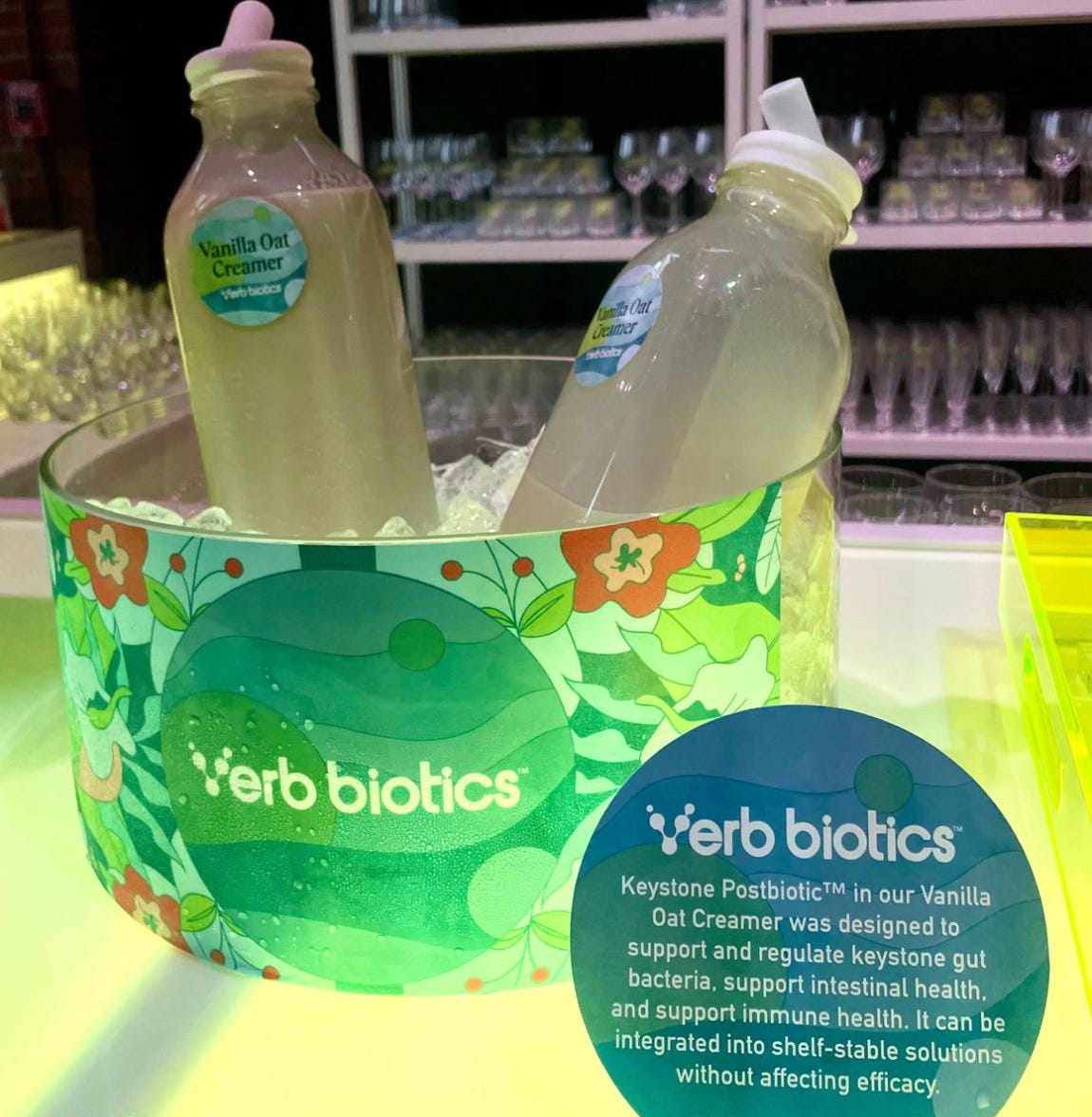
5. 🧬 Towards more open-sourced biology
Today, most biotech innovation is siloed in the R&D teams of separate companies. Strains, IP, and data are kept close to the chest.
As massive datasets become trainable and valuable, their applications will be relevant for external companies. Gingko currently has 3.7 billion genes sequenced – with more coming from acquisitions – and partnered with Cradle Bio to apply AI on its datasets.
The combination of cheaper sequencing, higher compute, and faster bioengineering is opening the floodgates for synthetic biology. Open-sourcing R&D with data is poised to disrupt a wide-range of industries, from pharma to food and chemicals.
In a few decades, almost every product will be a bioproduct. What do you think?
And if you attended Ferment, what were your takeaways? Let me know in the comments.
🥘 Recipe: Almond Blueberry Cake
This simple loaf cake from Yotam Ottolenghi is a treat. Rich, buttery, and tangy with the lemon frosting, it’s a perfect dessert or pairing with afternoon tea.
I’ve loved making Ottolenghi’s savory dishes and sides over the past few years, and this is the first dessert I made from his SIMPLE cookbook. It did not disappoint 😋 scroll down for the recipe.
PS: If you make it, please send pictures! :)
📚 Book: The Vital Question
Gingko Bioworks is making biology easier to engineer. To do so, they rely on microorganisms like bacteria, yeast, and filamentous fungi – whose origins reveal the fascinating history of life on Earth.
If you often marvel at the complexity and beauty of living things like I do, then this book is for you.
The Vital Question by Nick Lane tells the story of the origin of life on Earth. It might not be like we learned in school – no primordial soup here.
4 billion years ago, life formed in deep sea alkaline hydrothermal vents thanks to an electric potential across membranes. This led to the formation of an ancient microbe called archaea.
Nick Lane dives into how biological life originates on Earth:
🦠 How cells first produced energy
🤝 How life thrived with symbioses
🦁 How multicellular life developed
It’s a fascinating read with a few technical passages, though remains approachable for any science enthusiast. It left me with a newfound appreciation for how improbable our existence is – for which I can only feel grateful.
Two of my favorite biology facts come from this book 🤓
Our mitochondria (the famous “powerhouse of the cell”) create energy through an electric potential of 150 mV (millivolts) across a membrane 5 nm (nanometers) thick. The current generated is of 30 million Volts / meter: the equivalent of a lightning bolt. It happens thousands of times per second, in each of our cells. That is what makes us alive.
All multicellular life on Earth comes from an endosymbiosis between two ancient microbes, a bacteria and an archaea. The bacteria went inside the archaea and they made a pact: the bacteria would make energy for the archaea, who would reproduce its genes in return. This partnership was demonstrated to have occurred successfully only once over the course of a billion years. And all life on Earth came from it.
So let’s take a breath, and be grateful we are alive. 🙏
Thank you for reading – BRB next week ✌️
With mush love,
Nathan
🥘 Recipe: Almond Blueberry Cake
Recipe adapted from Yotam Ottolenghi
Ingredients (1 loaf cake)
150g unsalted butter at room temperature
190g cane sugar
Zest and juice of 2 lemons
1 tsp vanilla extract
3large eggs, or the equivalent in aqua faba
90g flour
1/2 tsp baking powder
⅛ tsp salt
110g ground almonds
200g blueberries
70g icing sugar
Instructions (40 minutes)
Preheat the oven to 350F or 180F. Grease and line a loaf tin 4.5 x 8 in or 11 x 21cm, and set aside.
Place the butter, sugar, lemon zest, 1 tablespoon of lemon juice and vanilla in the bowl of a free-standing food mixer with the paddle attachment in place. Beat on a high speed for 3–4 minutes, until light, then lower the speed to medium. Add the eggs, in small additions, scraping down the sides of the bowl. The mix may split a little, but don’t worry: it’ll come back together. Add the flour, salt and almonds in three additions. Finally, fold in 150g of blueberries, by hand, and pour into the prepared loaf tin.
Bake for 15 minutes, then sprinkle the remaining 50g of blueberries over the top of the cake. Return to the oven for another 15 minutes, until the cake is golden-brown but still uncooked. Cover loosely with tin foil and continue to bake for 25–30 minutes, until risen and cooked. Test by inserting a knife into the middle: it’s ready if it comes out clean. Remove from the oven and set aside, in its tin, to cool for 10 minutes, then remove from the tin and place on a wire rack to cool completely.
Meanwhile, make the icing. Put the remaining tablespoon of lemon juice into a bowl with the icing sugar and whisk until smooth. Pour over the cake and gently spread out: the blueberries on the top of the cake will bleed into the icing a little, but don’t worry: this will add to the look.
Two Ways I Can Help You:
Can I support your start-up, venture, or fund by featuring them in this newsletter? Reply to this email if you’d like to get featured or collaborate.
I’m offering tailored consulting for start-ups and VCs. I support start-ups and funds in the alternative protein and biomanufacturing space make their techno-economic analyses (TEAs), find the right scale-up partners, and conduct due diligence. Book a free 1:1 consulting intro call here.
Want to get in touch or chat further? Anything you’d like to hear more of?
Forwarded this email?
Subscribe below to receive an email from me every Wednesday.
No spam, just quality ingredients.






